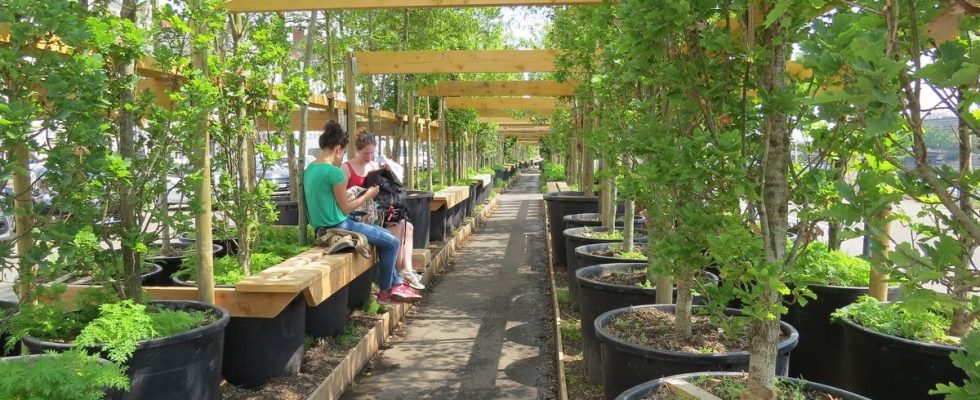Street skies in colored plastic in Rennes, potted trees at the Capitole in Toulouse, small fountains on the new Place du Commerce in Nantes… Summer has just begun and cities are competing with ideas to try to counter the rise in temperatures in the streets. But what are these devices really worth, sometimes presented as oases of freshness by the municipalities? This is the question that a team of researchers from the school of architecture (Ensa Nantes) and the CNRS are trying to answer.
Launched in 2018, the Coolscape project was particularly interested in very localized developments. Urban canopies, foggers, curtains… Essential devices to try to quickly cope with the phenomenon of “urban warming” which is accelerating, believes Ignacio Requena-Ruiz, from the Ambiances Architectures Urbanités laboratory. “The ideal, for a noticeable effect, would be to do it more massively, but in the meantime we have to experiment with things, continues the lecturer. This is an issue for cities: people must be able to continue to meet in the squares, in the streets, and not only in air-conditioned places! »
Contrasting results
The research team identified four broad categories: green spaces aimed at providing shade and humidity; devices using water of the mist or water mirror type, street furniture such as an awning or a large sail, and finally the use of materials that absorb less heat, or even have a cooling power. To know their effectiveness, a whole bunch of very precise measurements are carried out, thanks to a funny cart equipped with various sensors. “Well beyond a simple temperature reading, the objective is to analyze very precisely the thermal sensation of city dwellers, their perception of heat when they cross the place”, explains Ignacio Requena-Ruiz. Ground heat, wind, sunlight… everything is analysed.
And the first results are mixed: in Nantes, the (artificial) cascade of the Misery quarry, for example, causes a loss of 6 degrees in perceived temperature. Between 3 and 4 less under the plant canopy of the Quai des Plantes, this planted promenade installed for several summers on the Quai de la Fosse, which also fulfills “a social function, with people in particular the elderly who appropriate the space”. On the Esplanade de la Défense, in Paris, the refreshing platform is struggling to prove itself. Worse, the very light ground supposed to store less heat was considered too reflective, almost dazzling.
water and shade
“In fact, there is no miracle solution, admits the researcher. For interesting results, it is necessary to combine several of them. Aware that the resource is more limited than ever, the researcher believes that the use of water is the most conclusive for a feeling of freshness. It is also advisable to create as dense a shade as possible, whether through street furniture or a tree. “We should go back to the model of old towns, with narrow streets whose walls provide shade and lead to a small square with trees, benches and a fountain in the middle. »
But difficult to assess the relevance of a device in absolute terms, isolated from its environment. This would also be the key for municipalities thinking about equipping themselves. “If we can access the land, putting trees in pots is not a good solution, believes for example Ignacio Requena-Ruiz. It’s the same for furniture that would be installed next to a very green garden or not far from a river: there is no reason for people to sit there, and they even risk to be refractory, and to consider it as a gimmick. »
Especially when, as sometimes, the installation then seems abandoned. In Nantes, for example, the climbing plants supposed to cover the urban canopy, a large metal structure installed in 2021 on a small concrete square, have never really grown. Criticized by the public, the installation presented as an experiment only seems to be used very rarely.

